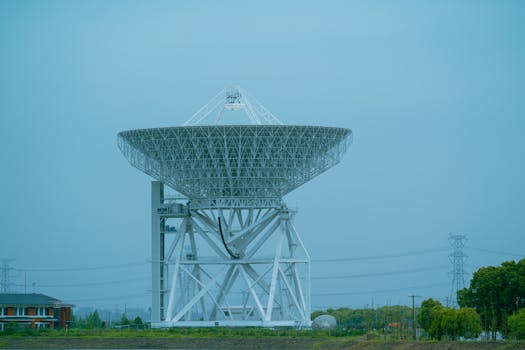
Breaking Barriers: How Recent Developments are Transforming Satellite Communication
Satellite communication has come a long way since its inception. With recent developments, the industry is experiencing a significant transformation. Satellite Communication is no longer limited to traditional broadcasting and voice communication. The latest advancements have opened up new avenues for satellite communication, enabling it to play a crucial role in various sectors such as navigation, remote sensing, and broadband connectivity.
Advancements in Satellite Technology
One of the significant developments in satellite communication is the launch of high-throughput satellites (HTS). These satellites offer higher bandwidth and faster data transfer rates, making them ideal for applications such as broadband connectivity, video streaming, and cellular backhaul. The use of HTS has also led to a reduction in costs, making satellite communication more affordable and accessible to a wider range of users.
Another significant development is the emergence of small satellites, also known as cubesats. These tiny satellites are smaller, lighter, and more affordable than traditional satellites, making them an attractive option for startups and research institutions. Small satellites have opened up new opportunities for satellite communication, enabling the deployment of constellations of satellites that can provide global coverage and real-time connectivity.
Transformation of the Satellite Communication Industry
The recent developments in satellite communication have transformed the industry in various ways. The use of HTS and small satellites has led to an increase in competition, driving down costs and making satellite communication more affordable. This, in turn, has led to an increase in demand, with more users opting for satellite communication for various applications.
The transformation of the satellite communication industry has also led to the emergence of new business models. Satellite operators are now offering a range of services, including broadband connectivity, managed networks, and satellite-enabled IoT solutions. This shift towards services has enabled satellite operators to diversify their revenue streams and reduce their dependence on traditional broadcasting and voice communication.
Future of Satellite Communication
The future of satellite communication looks promising, with several developments on the horizon. One of the most significant advancements is the launch of satellite constellations, which will provide global coverage and real-time connectivity. These constellations will enable a range of applications, including IoT, 5G, and precision agriculture.
Another significant development is the emergence of quantum communication, which will enable secure and encrypted communication over satellite links. This technology has the potential to revolutionize the way we communicate, enabling secure and reliable communication for sensitive applications such as finance, government, and defense.
In conclusion, recent developments in satellite communication are breaking barriers and transforming the industry. The use of HTS, small satellites, and satellite constellations has opened up new avenues for satellite communication, enabling it to play a crucial role in various sectors. As the industry continues to evolve, we can expect to see new innovations and advancements that will further transform the satellite communication landscape.



